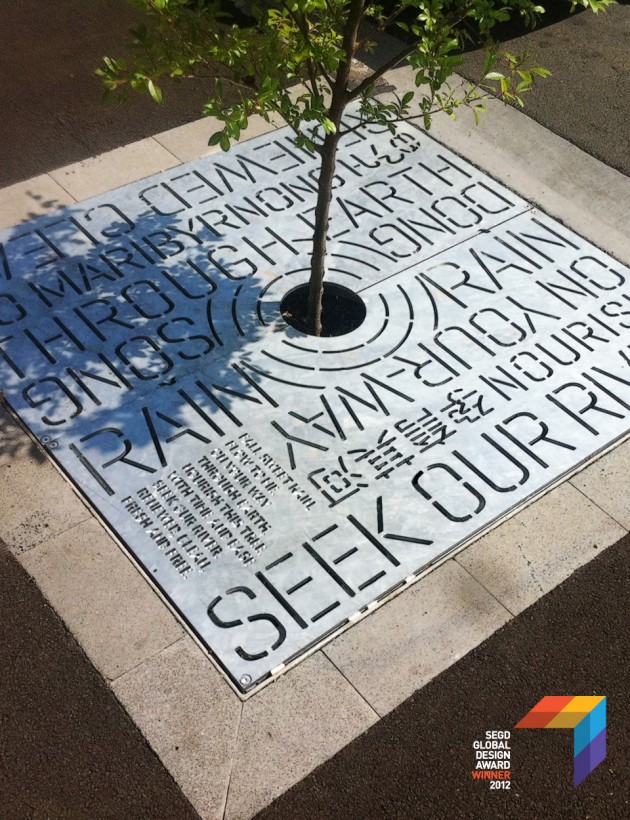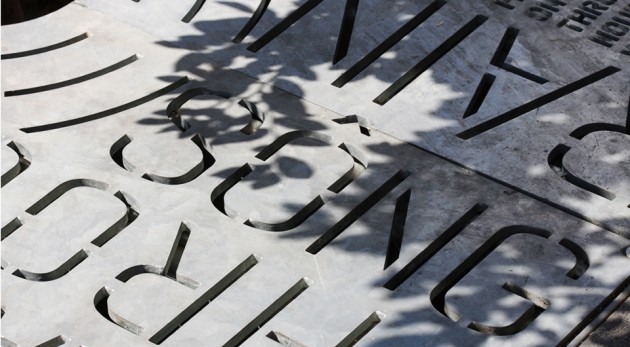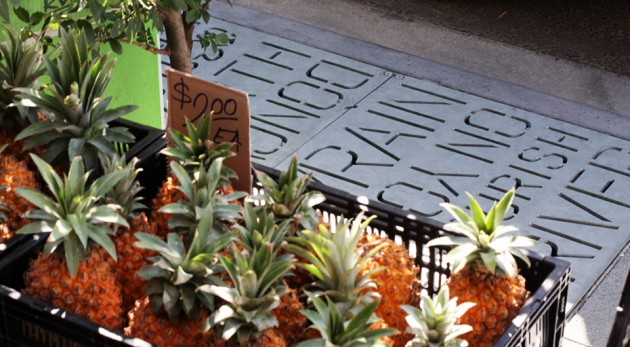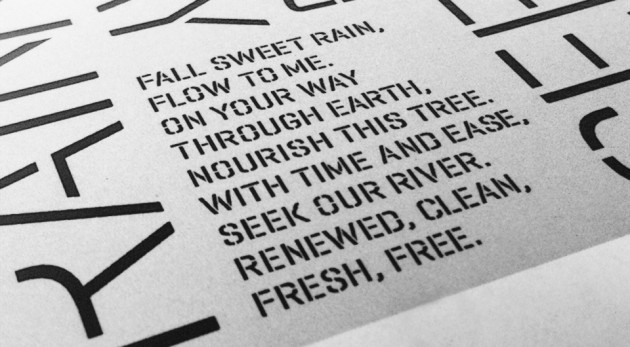Tree Grates
Client: Maribyrnong City Council
Location: Leeds Street, Footscray
Scope: Design an interpretive solution, which described the function and intent of a new 'raingarden', and was installed as part of a streetscape redevelopment
Timeline: Delivered on time: December 2011
Team: Mike Heine, Anthea Lemmer
Awards: SEGD 2012 Merit Award Winner
More >
In 2010, HeineJones designed an interpretive solution for a ‘raingarden’, part of a Maribyrnong City Council streetscape redevelopment in Leeds Street, Footscray.
HeineJones's solution for this project recieved a Merit award at the Society of Environmental Graphic Design annual conference and Global Design Awards presentation in New York City.
The ‘raingarden’’s structure is hidden and therefore difficult for the general public to comprehend. Twenty-two trees are planted along the footpath, all of which use Water Sensitive Urban Design principles. Collectively, the trees form a raingarden, which uses local rainfall to wash the streets and water trees. The remaining water is filtered, cleansed and fed into the Maribyrnong River.
HeineJones’s task was to explain the raingarden’s hidden function and intent. To work, our solution had to be integrated into both the raingarden’s hardware and the footpath, while also being presented at each of the 22 trees. It had to be robust and safe, but also engaging.
Our solution features simple, large-scale word elements laser cut though the 10mm steel plates housing the trees. The abstract words, some of which are presented in Chinese, Vietnamese and Arabic, form part of a poem. The full poem, laser cut into the design at a smaller scale, makes reference to the local Maribyrnong River and describes the rain garden’s function and intent.
The HeineJones solution engages the public in an emotive and highly legible way; the passage of water into the raingarden system is through the interpretative information itself. Reading the poetry forces a thoughtful consideration of not only its meaning, but also the raingarden’s function and intent.
While apparently simple, our solution presented many challenges. These included the engineering requirements (laser cutters and hot dip galvanisers), technical limitations, and the challenge the communication itself presented. The project required a collaborative approach between HeineJones, the engineering team, the council’s Urban Design team, Melbourne Water, and the production team. The result was so well received that Maribyrnong City Council has used it in all the new rain gardens across the municipality.
< Less






